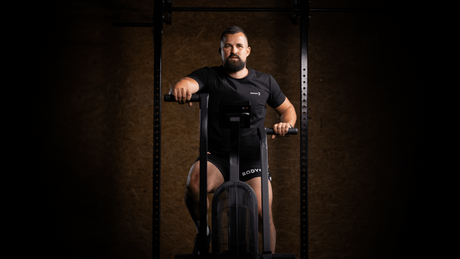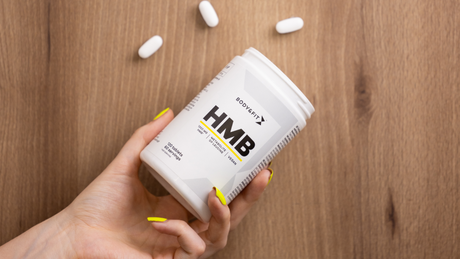During a cold and unpredictable winter of gym closures and lockdown rules, most people are sticking to home workouts or only braving the outdoors for a brisk run or frosty HIIT session. An increasing number of others, however, are embracing the icy chill and discovering the apparent benefits of a trend called cold water therapy. In this blog, we discuss why athletes, health & fitness enthusiasts and Hollywood celebrities alike are using it to boost their mental and physical wellbeing. Plus, we look at popular forms of cold water therapy — from ice baths to cold river swimming, cryotherapy and more — and the different ways you can use them to freshen up your health & fitness routine in a safe and responsible way. So, are you ready to take the plunge?
What is cold water therapy?
The term ‘cold water therapy’ refers to exposing the body to cold temperatures in order to make use of the therapeutic benefits it’s purported to offer, which range from the physical to the psychological. It comes in a variety of forms and can be used in many ways. Although cold water therapy has been around for centuries (the Greek physician, Hippocrates, is often noted as the first to recognise the health benefits of a dip in the cold), it’s becoming more and more popular today. Perhaps the most enigmatic and well-known proponent is the Dutch ‘Iceman’, Wim Hof, whose method is followed by thousands seeking to improve their wellbeing through increased exposure to the cold.
What are the (potential) benefits of cold water therapy?
The benefits of cold water therapy appear to be widespread, although many of these claims are hotly disputed in the scientific world. It is, however, known to reduce inflammation (we’ve all held a frozen bag of peas to a bruise or strain at some point in our lives). Alongside this, cold water therapy is also thought to:
- Improve circulation
- Speed up recovery
- Deepen sleep
- Boost the immune system
- Improve metabolic function
- Boost energy levels
Many people also experience improvements in their mental wellbeing, claiming a better mood, a stronger mindset and less stress in their everyday lives.
It’s all about getting comfortable with being uncomfortable. Exposure to cold temperatures triggers our survival response; our ‘fight or flight’ mechanisms. This in turn causes a release of chemicals, most notably norepinephrine and adrenaline, responsible for increasing alertness, raising the heart rate and spiking energy levels (i.e., powering up the body to survive). Endorphins, otherwise known as ‘happiness hormones’, are also released, which explains that feel-good feeling people get when they emerge from the cold.
This response, according to cold water therapy proponents like Wim Hof, is something that human beings have lost touch with and needs to be stimulated in order to discover our full potential. For him, and many more, cold water therapy is the way to do it. Others remain sceptical.
What are the different types of cold water therapy?
If you’re curious about what cold water therapy can do for you, there are a bunch of different things you can try out. Here’s a list of some of our favourites that are currently on the rise, from simple at-home experiments to outdoor adventures and expensive technological treatments.
The cold shower
In winter!? Yes, we know how hard it sounds, but a cold shower is one of the best ways to introduce cold water therapy into your daily life. You don’t need to submit yourself to sub-zero temperatures straight away. Start by reducing the temperature of your shower intermittently and gradually increase the period you can stand under the cold water. The more you do it, the easier it will get, and you can start the day feeling refreshed and energised.
The ice bath
You’ve probably seen professional athletes submerging their entire body in a tub filled with iced water after a game, competition or training session. Crazy, we know, but it’s great for the body’s recovery. The cold lowers the temperature of damaged muscles and constricts the blood vessels, which helps reduce pain, swelling and inflammation. It’s a step up from cold showers, but if you’re serious about reaching your training goals, it might be worth giving it a try.
Wild swimming
It’s not difficult to imagine why diving into a cold lake or river is becoming increasingly popular. In a world of lockdowns and COVID measures, it surely provides a sense of freedom and escape. On top of that, it may be a great way to improve circulation and heart health. We all know that feeling of jumping into cold water. The heart rate shoots up and our breathing becomes sharp and deep. This is when blood is rushing around the body to surround your vital organs and the heart is forced to pump more efficiently. It’s thought that regular stimulation of blood flow like this promotes a healthy circulation and, ultimately, a healthy heart.
The run-dip-run
The run-dip-run is simple — you run out to an ice-cold lake, jump in for a few minutes and run back home again! If you’re struggling to motivate yourself to train, the run-dip-run can certainly bring something different to your routine. After all, exploring nature can be a great adventure and help revive your passion. You might even break a PB on your way back to a well-deserved cup of tea and a warm (yes, warm) shower.
Cryotherapy
Not technically cold water therapy, Cryotherapy (literally meaning ‘cold therapy’) is a technique that involves exposing the body to extremely cold air. The exposure can be localised or full body. In full-body treatments, patients stand in an enclosed cryotherapy chamber where the temperature drops to anywhere between -130°C and -180°C for 2-4 minutes. Cryotherapy is used to treat injuries, mood disorders, migraine symptoms and arthritic pain. It’s even theorised that it may help treat Alzheimer’s disease and other forms of dementia.
Is cold water therapy dangerous?
The dangers of cold therapy generally come with chronic or over-exposure to extremely cold temperatures. Of course, there is always the possibility of hypothermia (when your body loses heat faster than it can produce it) if you spend too long in the ice bath. If you’re combining cold therapy with exercise, like the run-dip-run, the chance of injury may be higher as the muscles need to be warm and loose when you’re active. So, always warm up after your dip and bring a towel and a change of clothes with you. If you're new to all of this, take an (experienced) friend with you, so you can keep an eye on each other. As for cryotherapy, it is possible to experience tingling sensations and for the skin to become irritated after a session, although these are usually only temporary. If you experience these symptoms for more than 24 hours, consult your doctor.
The takeaway
It used to be that ice baths and cryotherapy were solely for the recovery or rehabilitation of professional athletes. Nowadays, it’s coming into the mainstream, but while there’s plenty of anecdotal evidence out there to support the health benefits that cold water therapy is believed to offer, scientific research is still in its early stages. Although, that doesn’t mean you can’t try it out for yourself. Our advice is to slowly ease into cold water therapy, build up the amount of time you expose yourself to the cold and have fun with it. It might be a shock to the system in the beginning, but you will get used to it. Hopefully, it can help you boost your health & fitness routine and beat those winter blues.



